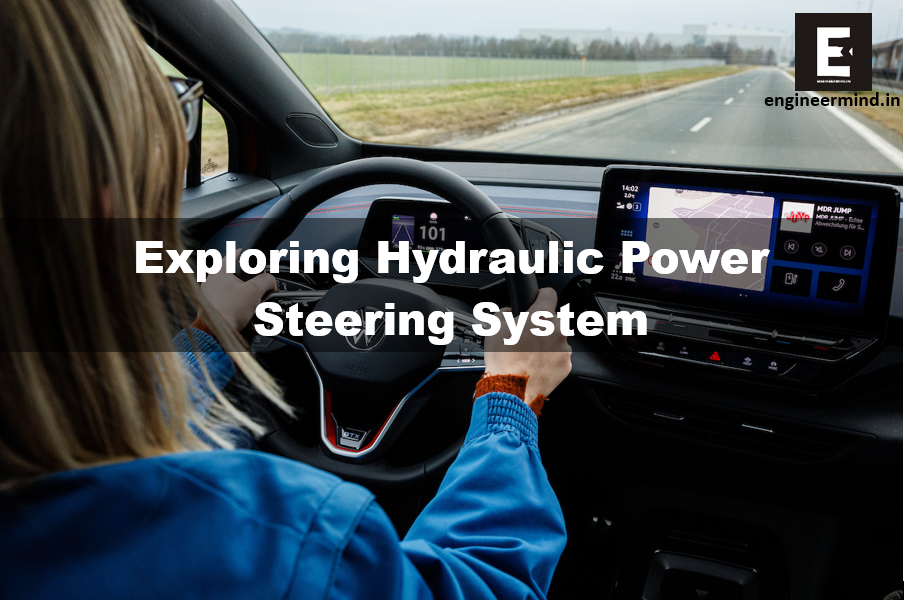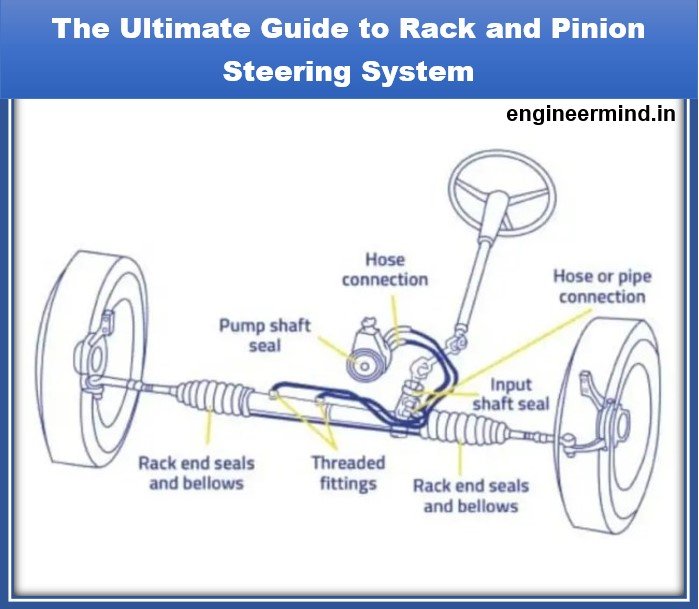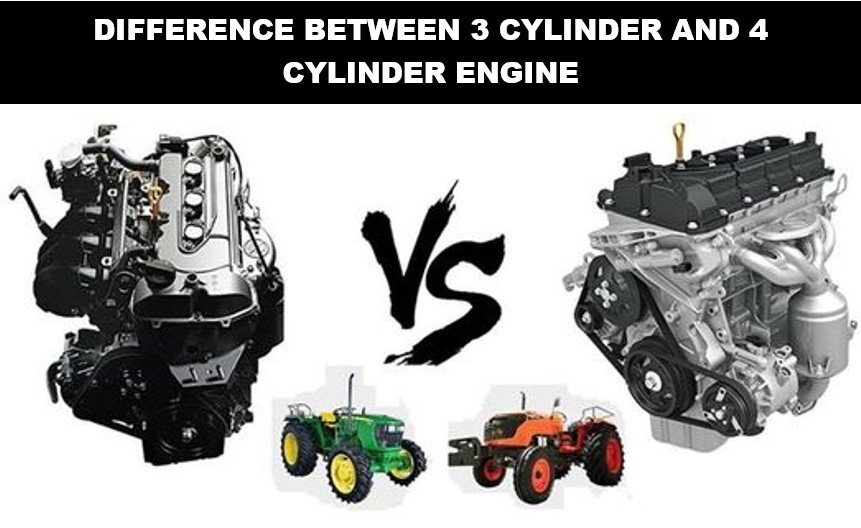In today’s world of advanced automotive technology, steering a vehicle has become effortless and precise, thanks to the hydraulic power steering system. These systems have transformed the driving experience by providing smooth and responsive steering control. In this article, we will delve into the inner workings of hydraulic power steering, its advantages and disadvantages, maintenance tips, and future developments in power steering technology.

Table of Contents
What is the hydraulic power steering system?
Hydraulic power steering (HPS) systems are widely employed in automobiles to assist drivers in maneuvering their vehicles with ease. These systems utilize hydraulic pressure to reduce the effort required for steering, especially during low-speed manoeuvres and parking.
How Hydraulic Power Steering Works
At the core of a hydraulic power steering system lies the power steering fluid. This specialized fluid plays a crucial role in transmitting force within the system. It acts as a medium for transferring hydraulic pressure from the steering pump to the steering gearbox, thus assisting in turning the wheels.
A typical hydraulic steering system consists of several key components. The steering pump, driven by the engine, generates hydraulic pressure. The power steering fluid is stored in a reservoir, ensuring an adequate supply for the system. From the pump, the pressurized fluid flows to the steering gearbox. Here, the fluid’s hydraulic force is converted into mechanical force, enabling the wheels to turn. The steering linkage and tie rods connect the steering gearbox to the wheels, translating the steering input into physical movement.
Advantages of Hydraulic Power Steering Systems
Smooth and Effortless Steering
One of the primary advantages of hydraulic steering is the ease with which drivers can turn the steering wheel. The pressurized fluid amplifies the force applied by the driver, resulting in smooth and effortless steering, even at low speeds. This feature greatly reduces driver fatigue and enhances overall comfort.
Responsive Steering Control
Hydraulic power steering provides immediate and responsive steering control. The hydraulic pressure allows for quick and precise movements of the steering system, enabling drivers to navigate through various road conditions with ease. Whether it’s making quick turns or maintaining stability on winding roads, HPS ensures a high level of control and confidence.
Enhanced Vehicle Safety
By reducing the effort required for steering, hydraulic power steering enhances vehicle safety. It allows drivers to maintain better control over their vehicles, especially in emergency situations or when making quick maneuvers to avoid obstacles. The responsive nature of hydraulic steering helps prevent oversteering or understeering, minimizing the risk of accidents.
Disadvantages of Hydraulic Power Steering Systems
While hydraulic power steering systems offer numerous advantages, they also have some drawbacks worth considering.
Power Loss
Hydraulic power steering systems rely on engine power to operate. As a result, these systems can cause a slight loss in engine performance and fuel efficiency, particularly when compared to electric power steering systems. However, advancements in technology have significantly reduced this power loss, making it less noticeable in modern vehicles.
Complex Design and Maintenance
Hydraulic power steering systems have a relatively complex design, involving multiple components and intricate fluid circuits. This complexity can make repairs and maintenance more challenging, requiring specialized knowledge and tools. Regular inspection and servicing are essential to ensure the system functions optimally and to detect any potential issues early on.
Potential Fluid Leaks
Due to the high-pressure nature of hydraulic power steering systems, there is a risk of fluid leaks over time. These leaks can result from deteriorating seals, damaged hoses, or faulty connections. It is crucial to identify and address any leaks promptly, as they can lead to a loss of steering assistance and potentially cause further damage to the system.
Hydraulic Power Steering VS Electric Power Steering
Electric power steering (EPS) systems have gained popularity in recent years, offering some advantages over hydraulic power steering systems.
Differences in Operation
While hydraulic power steering systems rely on hydraulic pressure, electric power steering systems use an electric motor to assist steering. EPS systems are more efficient in terms of power consumption, as they do not rely on engine power. This results in potential fuel savings and reduces the load on the engine.
Pros and Cons of Electric Power Steering
Electric power steering systems offer precise control and can be fine-tuned to provide different steering feels. They are also easier to integrate with advanced driver-assistance systems, enhancing overall vehicle safety. However, some drivers prefer the “road feel” provided by HPS, as electric power steering may lack a certain level of feedback. Additionally, the upfront cost of implementing electric power steering may be higher than that of hydraulic power steering.
Maintenance and Troubleshooting Tips for Hydraulic Power Steering Systems
To ensure optimal performance and longevity of a hydraulic power steering system, regular maintenance and troubleshooting are essential. Here are some tips to consider:
Checking Power Steering Fluid Levels
Regularly check the power steering fluid level using the dipstick or level indicator. Low fluid levels can result in inadequate steering assistance and potential damage to the system. If the fluid level is low, top it up with the recommended type of power steering fluid.
Flushing and Replacing Power Steering Fluid
Periodically flush and replace the power steering fluid as recommended by the vehicle manufacturer. Over time, contaminants can accumulate in the fluid, affecting its lubricating and hydraulic properties. Flushing the system ensures that fresh and clean fluid circulates, reducing the risk of system failure.
Identifying and Fixing Leaks
Inspect the power steering system for any signs of fluid leaks, such as puddles or stains under the vehicle. If a leak is detected, it is crucial to identify the source and repair it promptly. Leaks can occur at various points in the system, including seals, hoses, and connections. Addressing leaks early on prevents further damage and potential system failure.
Regular Inspection and Servicing
Schedule regular inspections and servicing of the hydraulic power steering system. This includes checking the condition of components such as the steering pump, gearbox, hoses, and tie rods. Lubricate any moving parts as recommended by the manufacturer. Regular servicing helps detect and address any potential issues before they escalate, ensuring the system operates smoothly and reliably.
Future Developments in Power Steering Technology
The field of power steering technology continues to evolve, with ongoing advancements and innovations aimed at enhancing performance and efficiency.
Electric Power Steering Advances
Electric power steering systems are continually improving, thanks to advancements in motor technology and control algorithms. Manufacturers are focused on refining the balance between steering feel and ease of use, allowing drivers to customize their steering preferences. Additionally, the integration of electric power steering with other vehicle systems, such as advanced driver-assistance systems, offers enhanced safety features.
Electro-Hydraulic Power Steering Systems
Electro-hydraulic power steering (EHPS) systems combine the benefits of both hydraulic and electric power steering. EHPS systems use an electric motor to drive the hydraulic pump, offering improved efficiency compared to traditional HPS. These systems provide greater flexibility in adjusting steering assistance levels and can contribute to fuel savings.
Conclusion
Hydraulic power steering systems have played a significant role in improving the driving experience by providing smooth and responsive steering control. The advantages of effortless steering, responsive control, and enhanced vehicle safety make HPS systems a popular choice in the automotive industry. Although there are some drawbacks, such as power loss and maintenance complexity, regular servicing and prompt leak detection can mitigate potential issues.
As power steering technology continues to evolve, future developments hold exciting possibilities. Advancements in electric power steering systems, with their precision and integration capabilities, promise further improvements in overall performance and safety. Additionally, the emergence of electro-hydraulic power steering systems offers an efficient and flexible solution that combines the benefits of both hydraulic and electric power steering.
With regular maintenance and a keen eye on emerging technologies, drivers can continue to enjoy the benefits of hydraulic power steering while embracing the advancements that lie ahead.
FAQs
Can I use any type of power steering fluid in a hydraulic power steering system?
It is essential to use the type of power steering fluid recommended by the vehicle manufacturer to ensure compatibility and optimal performance.
How often should I check the power steering fluid level?
It is advisable to check the power steering fluid level during routine vehicle maintenance or at least once every few months.
What are the signs of a potential power steering fluid leak?
Signs of a power steering fluid leak include low fluid levels, difficulty steering, squealing noises during steering, and visible fluid stains or puddles under the vehicle.
Can I switch from a hydraulic power steering system to an electric power steering system?
Switching from a hydraulic power steering system to an electric power steering system typically requires significant modifications and may not be feasible or cost-effective in most cases.
How do I know if my hydraulic power steering system needs servicing?
If you experience difficulties in steering, notice fluid leaks, or hear unusual noises during steering, it is advisable to have your hydraulic power steering system inspected and serviced by a qualified professional.








